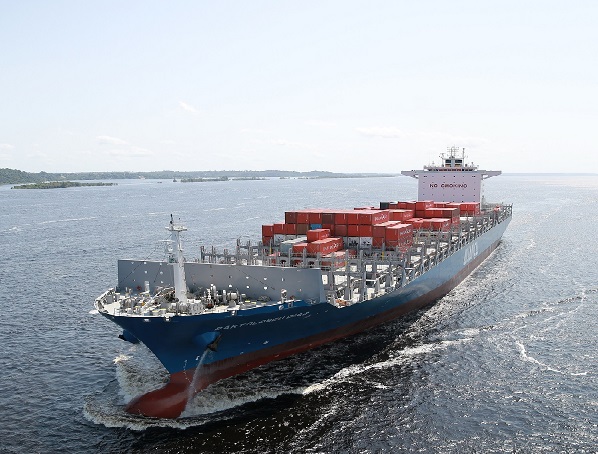
Hamburg Sud subsidiary Alianca Navegacao e Logistica has expanded its coverage of the East Coast of South America by adding two new vessels into its Brazilian cabotage and Mercosur Gran Cabotage services.
That brings the number deployed in its three ECSA services up to 11 and, with 4,800 TEU capacity each, the two new additions are the largest vessels in this trade lane, in which Mercosul Line (a Maersk Line subsidiary) and Log-In Logistica (a Brazilian company) are the only rivals and they compete for a rapidly growing market of around 420,000 TEU per year.
Alianca has spent Reais250M (US$103.76M) on buying the two container ships, both constructed at the Shanghai Shipyard in China, which were delivered to the Brazilian flag carrier in the jungle port of Manaus, where they had to wait for two weeks before being granted Special Brazilian Flag (REB) status.
With the Gran Cabotage (from northern Brazil to Argentina via Uruguay) service connecting Portuguese speaking Brazil with Spanish speaking Argentina and Uruguay, Hamburg Sud managers have been diplomatic by naming the ships after famous navigators from Portugal and Spain: with one of the sister ships called the Bartolomeu Dias and the other, the Vicente Pinzon.
The Alianca East Coast of South America (ECSA) coastal services cover 18 ports along the coast of the Mercosur trade bloc countries, making nearly 130 calls per month. The two new vessels join nine other Alianca box ships – ranging from 1,700 TEU to 3,800-TEU capacity – plying their trade on this route.
“We are constantly investing in Brazil so as to support the growth of national supply chains here and we are offering a more sustainable and economic form of transportation,” Julian Thomas, the CEO for Alianca Navegacao e Logistica, said. “The recent changes in our cabotage service reflect an increase of 35% in transport capacity in the three cabotage routes that the company operates.”
He continued: “We now have the prospect to close 2014 with a 20% increase in the movement of cabotage containers.”
The two new vessels have 650 reefer plugs installed on board and, according to Alianca, they consumer 60% less fuel per load than other container ships.
Thomas emphasized this and also the economic savings for shippers sending their cargo by coastal services rather than by truck, claiming the logistical costs are between 10% and 15% lower using water rather than road, and the accident and theft rate is also lower.
Alianca revealed that it has carried some 2 million containers via its cabotage and ECSA coastal services between 1999 and 2013, which is the equivalent of taking some 1.2 million trucks off the road.
Thomas said: “For 2015, we will provide reports to inform customers about CO2 emissions, helping them with their programmes of reducing the release of greenhouse gases into the atmosphere. This will be done through the (GL-Emission Manager) GLEM project, which is already in the testing phase on our cabotage vessels. In this manner we want to prove and demonstrate our commitment to preserving the environment.”
The only downside to the introduction of the Bartolomeu Dias and the Vicente Pinzon, according to Thomas and Hamburg Sud/Alianca, was that they were not built in Brazil. The company claims that “as a result of high utilization of domestic shipyards by the oil and gas industry, it was necessary to meet the immediate market demand with imports."
“We really wanted to build in Brazil, and we fought for this until the last moments,” Thomas said. “And this is the only negative point in the whole process, since it was not possible to do this because of the lack of shipyard capacity to meet our demand in time. However, we are already in the planning stage for continued fleet renewal with the construction of four more ships in the domestic market by 2018.”
Alianca recently made some adjustments to its various ECSA services and the 11 vessels are now deployed in four slings, covering the ports of : Manaus, Vila do Conde, Sao Luis, Pecem, Suape, Salvador, Vitoria, Rio de Janeiro, Sepetiba (Itaguai), Santos, Paranagua, Itapoa (which is partially owned by Hamburg Sud), Imbituba, Rio Grande, Montevideo, Buenos Aires, Zarate and Rosario.
